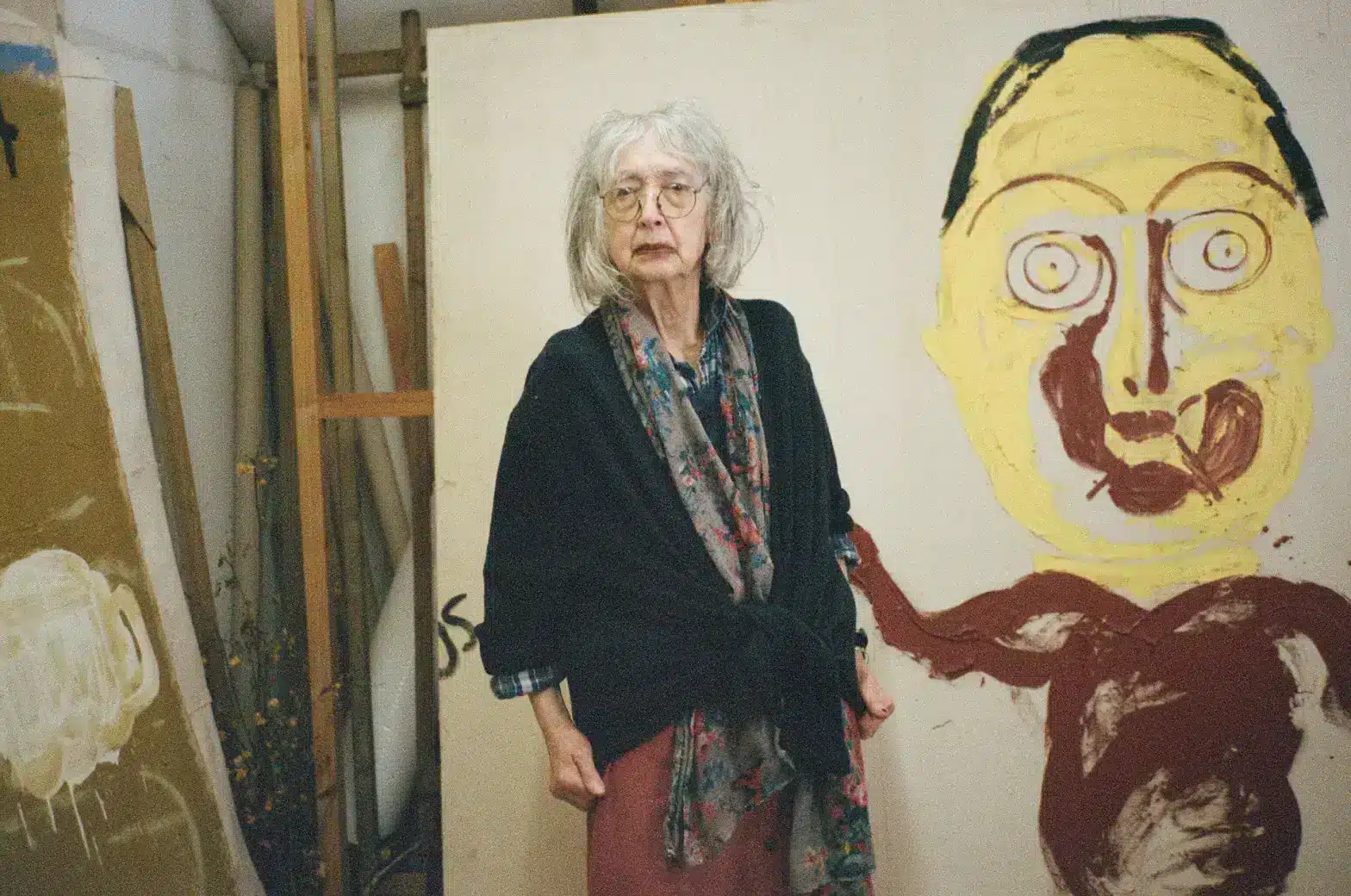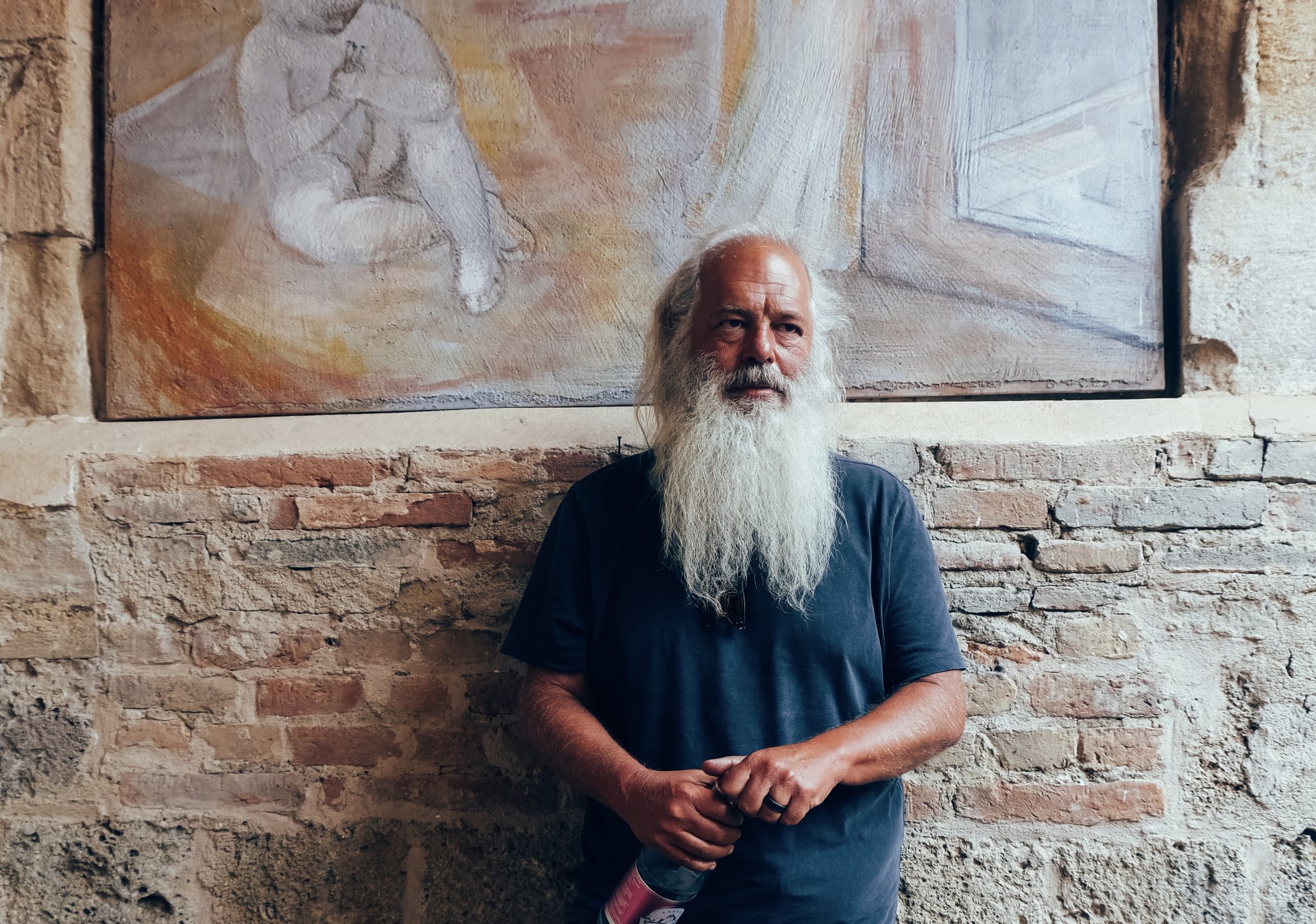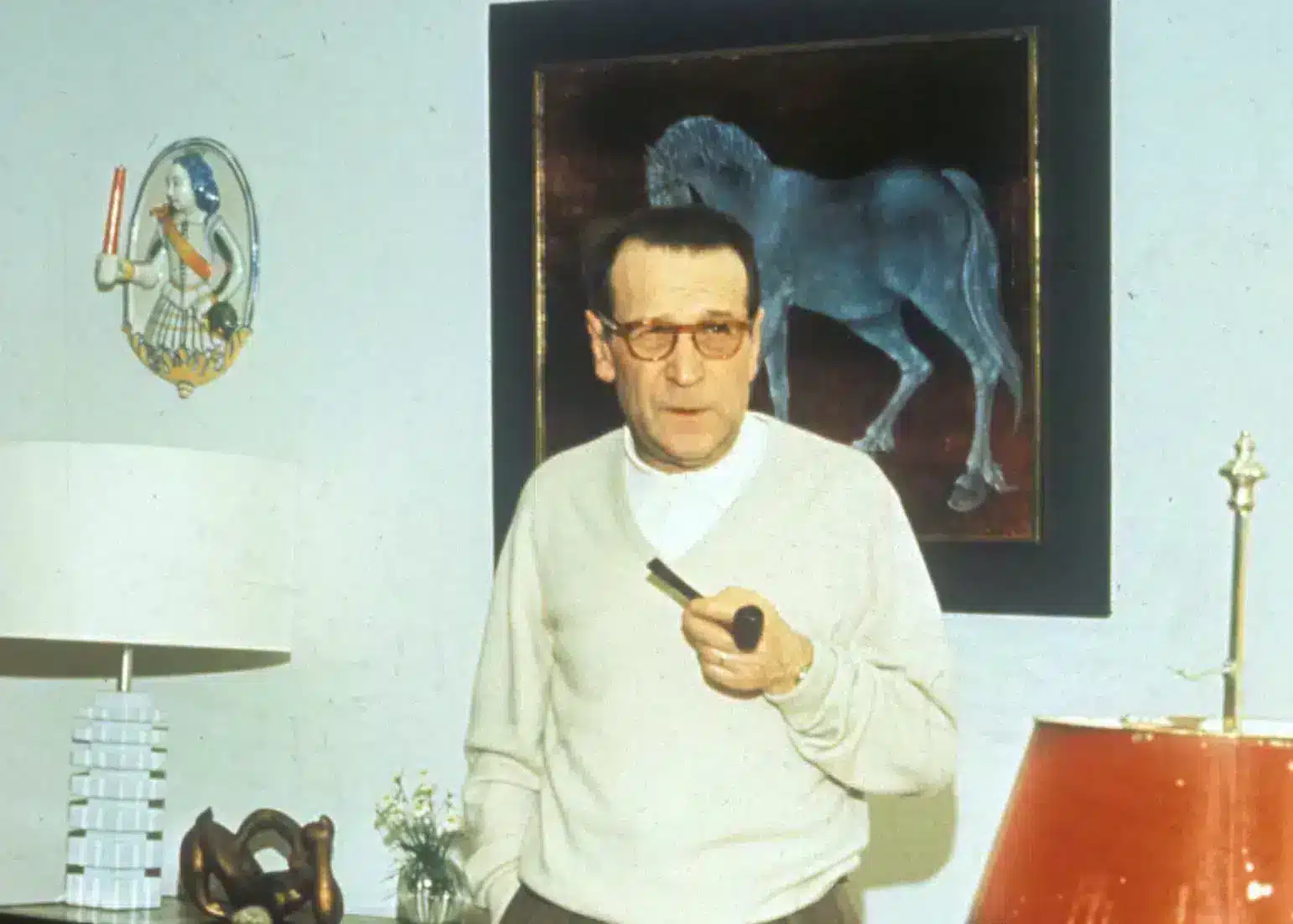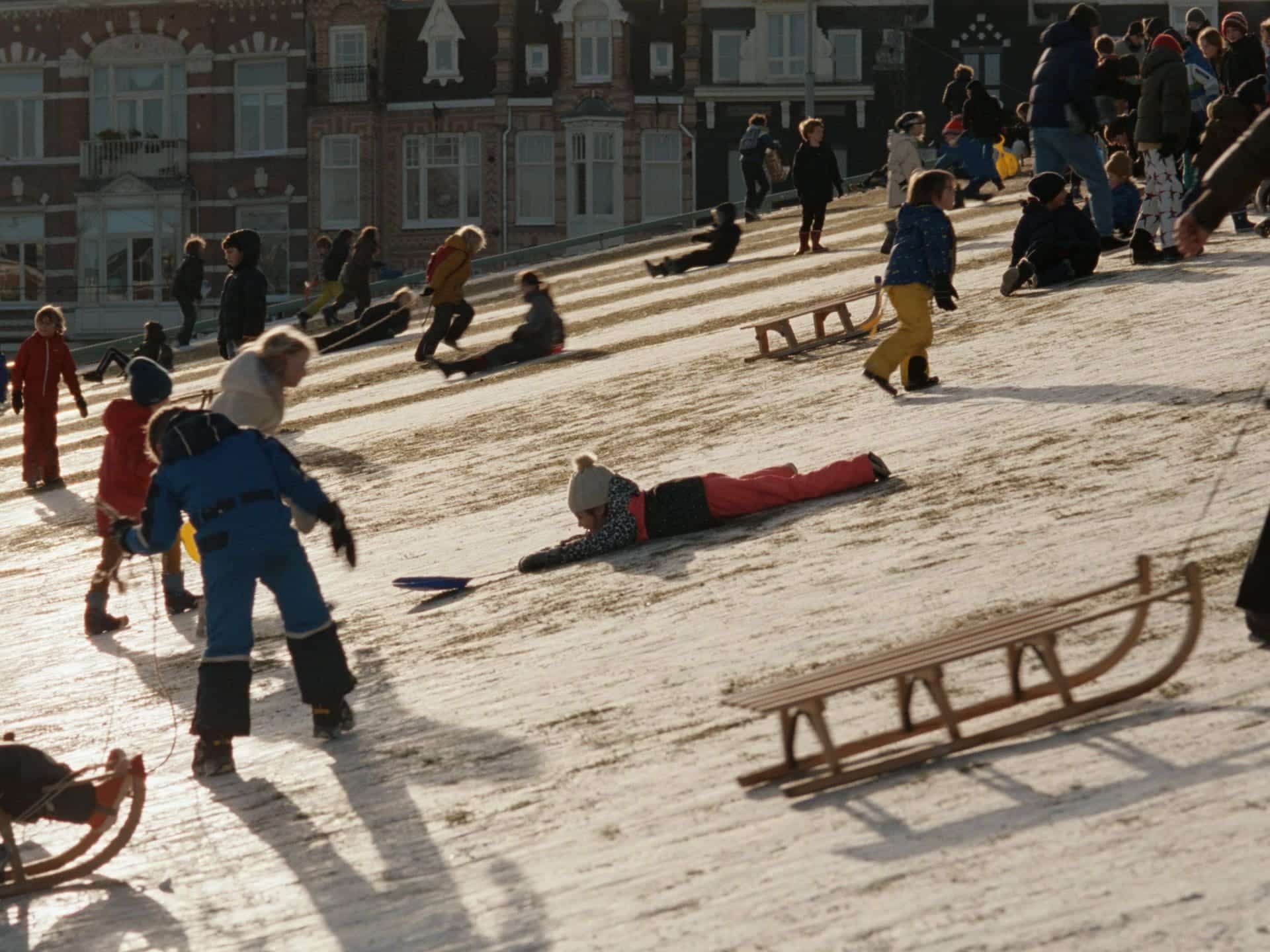
Steve McQueen’s Occupied City is a shortened title of the book it is based on. Atlas van een bezette stad: Amsterdam 1940-1945 (Atlas of Occupied City, Amsterdam 1940-1945) was written by Bianca Stigter in 2019. With her 560-page illustrated tome, Stigter (who is McQueen’s wife) maps the invisible and visible traces of Nazi Occupation across her home city of Amsterdam. Each entry is a different address, and details the lives of ordinary people living under extraordinary circumstances. As literary adaptations go, McQueen’s is simple. 130 entries, gently narrated by the British-Dutch voice artist Melanie Hyam are overlaid with interior and exterior shots of the locations as they are today, from the Rijksmuseum and the Red Light District to less touristy apartment buildings, schools, hospitals and theatres. The film is 4 hours and 22 minutes-long and has a 15-minute break built into the runtime.
Whilst at first this pause might seem like a parochial act of housekeeping, it is also an artistic gesture. Whilst breaks are normally at the discretion of the individual or venue, in creating this space himself, McQueen admits that his formally sparse, archaeological film is long and demanding to watch, but he wants us to try anyway. Occupied City bears obvious parallels with French director Claude Lanzman’s Shoah, the landmark 9-hour long Holocaust documentary. For Lanzman, length and a lack of aestheticization was essential in creating a documentary that properly bore witness to the victims of the Holocaust. The same is true for McQueen – anything shorter would feel trite and reductive when Amsterdam lost 60,000 of its 80,000 Jews (as well as other ethnic groups and civilians) to the Holocaust. The film has no narrative arc, no subplots or main characters. Each story is as important as the other. To detail any one story here in a review would likewise be to create a hierarchy that McQueen and Stigter did not intend. These are the little lives of history, and it is essential that we listen.
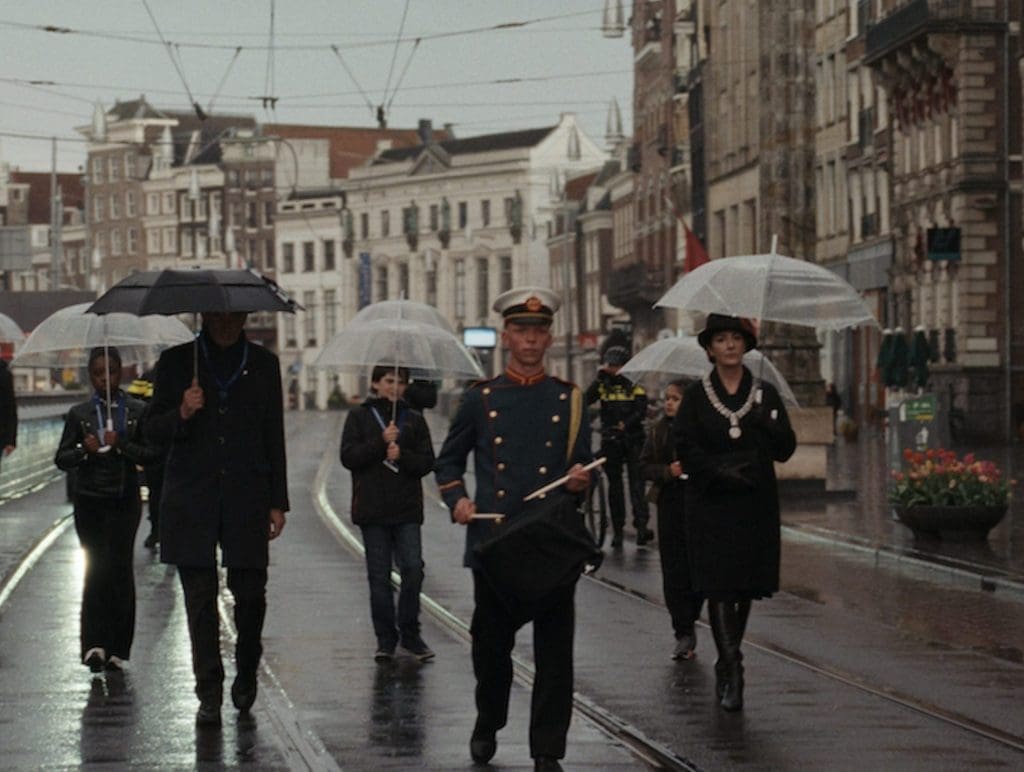
Yet the film’s expansive temporality has its roots in a time when the contemporary world itself became stilled. McQueen and his wife live in Amsterdam and it was during lockdown that they embarked on the project (a time when many were attempting to write their King Lears). The pandemic’s slowness can be felt in the film’s long and languorous takes – we sense that the camera has nowhere to be, nowhere to go. (A 36-hour long version of the film, featuring every single address in the book, supposedly exists). The city’s wartime occupation rhymes with the city’s ‘occupation’ by a virus. McQueen wryly overlays tales of ghettoisation, starvation and extermination camps with footage of luxury shops being boarded up and anti-lockdown marches (what was the meaning of freedom, again?). Whilst sometimes the images and stories seem entirely incongruous, at times it is eerily synchronised – images of ballet dancers as the narration talks of the rape of civilian women, for example.
The cinematography is exquisitely beautiful. The visuals seem to take cues from Flemish art history. Interior shots – of people sitting in their beautiful houses in moments of quiet interiority, work or leisure are like tableaux by Vermeer. Whilst McQueen’s penchant for convivial scenes of parties and street life recall the carnivalesque of Breughel. At one point the canal freezes over and we watch as people skate and drink. One beautiful shot shows two lovers in the grass, framed by spring tulips. A long, more experimental, immersive sequence has us flying with drones around the city, twisting and turning, upside down and all around. Whilst the citizens (past and present) are under curfew, the camera is free to roam.
Occupied City reflects on the meaning of home. Showing how a place becomes inhospitable to its own inhabitants, but also what it is to arrive in a place that isn’t ‘yours’. McQueen, who moved to Amsterdam 25 years ago, focuses on contemporary Black lives: from shots of men filming music videos in the street and ceremonies remembering African victims of the Dutch slave trade to racist micro-aggressions. There is a sense McQueen is trying to find himself in the city. Towards the end of the film we see refugees of the Ukraine War arrive, the streets entirely taken over by climate protesters and a Black family celebrating their son’s Bah Mitzvah. New, moving occupations which gesture towards more hopeful futures.
Occupied City is in cinemas from 9th February
